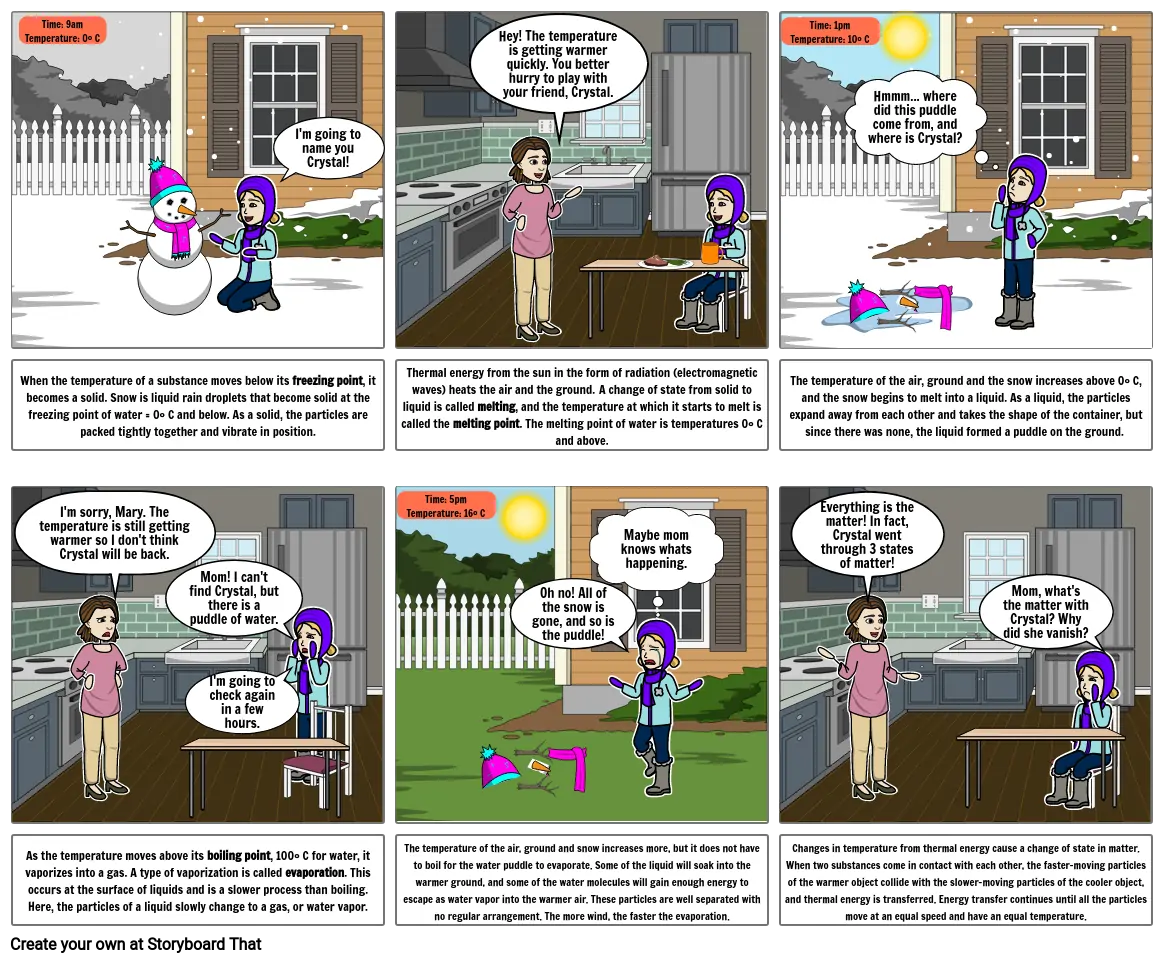Phases of Matter

Storyboard Text
- Time: 9amTemperature: 0° C
- I'm going to name you Crystal!
- Hey! The temperature is getting warmer quickly. You better hurry to play with your friend, Crystal.
- Time: 1pmTemperature: 10° C
- Hmmm... where did this puddle come from, and where is Crystal?
- When the temperature of a substance moves below its freezing point, it becomes a solid. Snow is liquid rain droplets that become solid at the freezing point of water = 0° C and below. As a solid, the particles are packed tightly together and vibrate in position.
- I'm sorry, Mary. The temperature is still getting warmer so I don't think Crystal will be back.
- Mom! I can't find Crystal, but there is a puddle of water.
- I'm going to check again in a few hours.
- Thermal energy from the sun in the form of radiation (electromagnetic waves) heats the air and the ground. A change of state from solid to liquid is called melting, and the temperature at which it starts to melt is called the melting point. The melting point of water is temperatures 0° C and above.
- Time: 5pmTemperature: 16° C
- Oh no! All of the snow is gone, and so is the puddle!
- Maybe mom knows whats happening.
- The temperature of the air, ground and the snow increases above 0° C, and the snow begins to melt into a liquid. As a liquid, the particles expand away from each other and takes the shape of the container, but since there was none, the liquid formed a puddle on the ground.
- Everything is the matter! In fact, Crystal went through 3 states of matter!
- Mom, what's the matter with Crystal? Why did she vanish?
- As the temperature moves above its boiling point, 100° C for water, it vaporizes into a gas. A type of vaporization is called evaporation. This occurs at the surface of liquids and is a slower process than boiling. Here, the particles of a liquid slowly change to a gas, or water vapor.
- The temperature of the air, ground and snow increases more, but it does not have to boil for the water puddle to evaporate. Some of the liquid will soak into the warmer ground, and some of the water molecules will gain enough energy to escape as water vapor into the warmer air. These particles are well separated with no regular arrangement. The more wind, the faster the evaporation.
- Changes in temperature from thermal energy cause a change of state in matter. When two substances come in contact with each other, the faster-moving particles of the warmer object collide with the slower-moving particles of the cooler object, and thermal energy is transferred. Energy transfer continues until all the particles move at an equal speed and have an equal temperature.
Over 30 Million Storyboards Created

